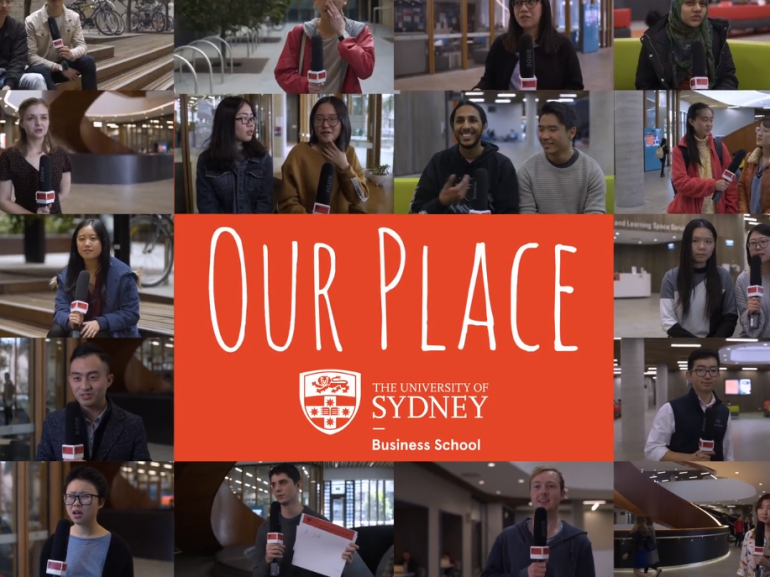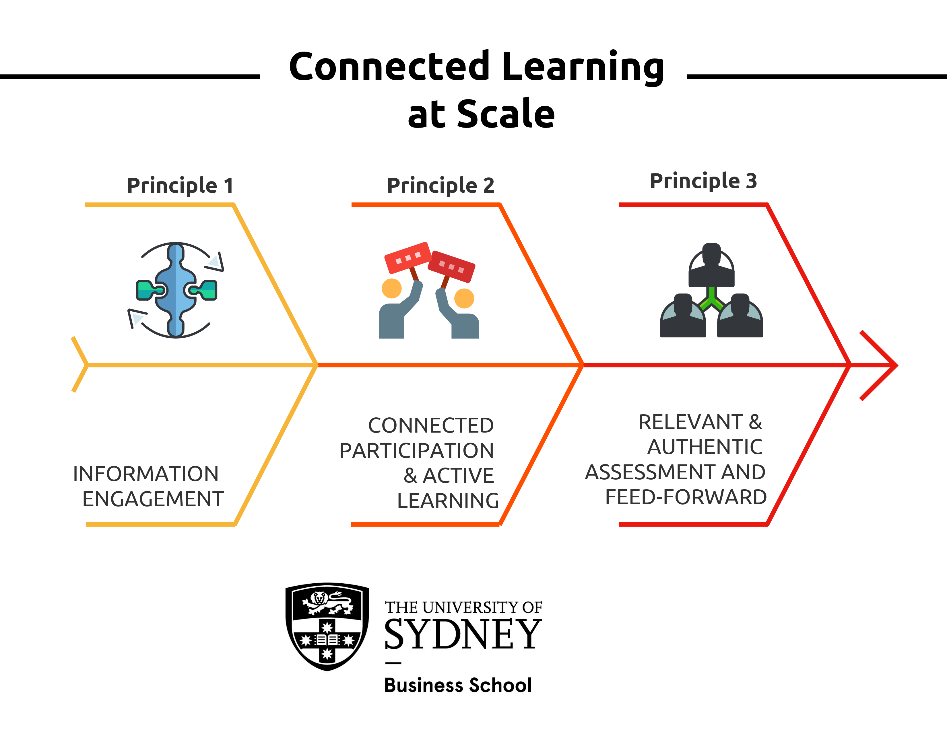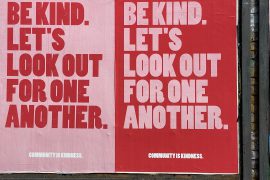Active participation in shaping and influencing society, whether it is as part of a movement for change, addressing critical global and local challenges, or sharing the experience of being a part of something, can create and nurture critical spaces for learning to happen. Universities have a conflicted history of supporting the development and membership of these spaces (and our community), alternating between the role we play as a social good in a civil society and the perceptions around the gated ivory towers of who can work and study within the four walls of our institution.
Our spaces and places can feel intimidating, socially isolating, and huge
Becoming part of the teaching and learning community at the University of Sydney Business School doesn’t happen automatically the moment our students start their journey. Even with well-planned induction and orientation programs, transition into our community can be complex and daunting. Our spaces and places (physical, virtual, and curricular) can feel intimidating, socially isolating, and huge. Students experience the uncertainty of moving from very safe, familiar spaces into new, unknown, and sometimes precarious ones. These transitions can also represent significant opportunities for learning, where adaptive and transformative capabilities can develop, affording the ability to exist and succeed within multiple senses of place, not just ours.
At the Business School, our first-year undergraduate intake is around 2,000 students and our pre-experience Master of Commerce has 3,000 commencing students, the vast majority being international students from the Asia-Pacific. These students have moved from familiar undergraduate or school environments, homes with friends and family, and cultures with language and food and the social complexity that evolves with familiarity and experience. They often land in an unfamiliar building on a huge campus in a foreign city with limited opportunities to make connections with other students, exacerbated by pressures of timetables, finding a place to live, navigating the network, and working out the public transport system (a common theme in many places). Even with the presence of clubs and societies, networking events and social media, it is easy to feel lost and alone in the giant, flowing crowd of students, staff, knowledge and research.
One of the consequences of teaching and learning at scale is that many of our classes are either huge or fragmented into dozens of smaller tutorials, limiting opportunities to nurture budding new connections and friendships. The pressures of learning, studying and living mean that the time available for physical co-location within our spaces is often limited, with technology used to ferment and facilitate the fleeting connectivity required to co-ordinate group work or meet up for some collective study time.
Our students told us how they wanted to be part of something that supported social interaction, not isolation
The Business School has approached these critical challenges in several strategic ways. Firstly, we have recognised the importance of hearing, sharing and embedding the student voice in how we (and they) design their learning experiences. In 2018, we launched a project called ‘Work, Live, Play, Learn’ which encouraged students and alumni to engage in and record conversations with hundreds of members of their learning community about the ways they studied, how they coped with the pressures we put on them through our learning design, their use and application of technologies, and the expectations and hopes they brought to the experience. Our students told us how they wanted to be part of something that supported social interaction, not isolation. They told us about what kind of assessment and feedback they valued the most. They shared with us their insights about working and learning together with friends, teachers and the wider community. They described how they were bound together with initially weak ties centred on the commonly held expectations of a university experience (how they worked on group assignments or how they engaged in learning through lectures, for example). We have produced a series of videos sharing these stories, which are showing on screens all around the Abercrombie Building.
We drew on these expectations of networking, identity, and sociality to begin the re-design of our curriculum and through that teaching, assessment, and the student experience. We are developing a transformational teaching and learning approach at a unit of study level that helps students find places and spaces to experiment, to test, to succeed and fail, to acquire and apply, to inquire, to challenge and debate, to collaborate, to make, and to share. We have taken the nine largest common-core units in our programs (with an average class size of 3,000) and have begun to transform them through embedding three critical principles, all informed by the importance of developing and leveraging community and connections. We call this project Connected Learning at Scale (CLaS). The project is built on three principles, which will inform the design of the teaching, learning and assessment experience in these nine units and by 2025 in the majority of units across the School.
Principle 1: Information engagement – where students both individually and collectively engage with discipline knowledge as opposed to having it broadcast at them in a lecture.
Principle 2: Connected participation and active learning -where face-to-face teaching time, student learning activities and technology are leveraged to build connections and networks to address, debate and solve critical global and local challenges though innovative pedagogical approaches.
Principle 3: Relevant and authentic assessment and feed-forward – where learning is applied and tested through authentic assessment modes supported by opportunities to receive and share feedback from both academics their peers.
Students can leverage the problem-solving capacities of the crowd and find ways to support their own hopes and possibilities for the future
The work to implement Connected Learning at Scale is still at an early stage. What we have learnt so far is that assuming that all students are homogenous and equally seek a homogenous experience, whilst sympathetic to the affordances and limitations of large-scale education, has not fully embedded lasting connections and relationships between our learners and their institution. Nor has it enhanced the capability of our students to make and use fleeting connections and/or leverage weak network ties for learning, either inside or outside their university community. Applying these capabilities to a unique contextual frame such as solving critical global and local challenges provides students a sense of authenticity, which can be both experienced and shared with others in their network. They can leverage the problem-solving capacities of the crowd and find ways to support their own hopes and possibilities for the future, all whilst being a part of Our Place. We are happy to share our insights and our experiences with all staff at the University and more widely. We will soon have an Our Teaching section of the Business School website which will feature case studies, videos, and other artefacts to share. If you would like more information please don’t hesitate to contact myself or the Project Director, Associate Professor Elaine Huber.
Some of this blog post has been reproduced with permission from the London School of Economics Higher Education blog.







5 Comments